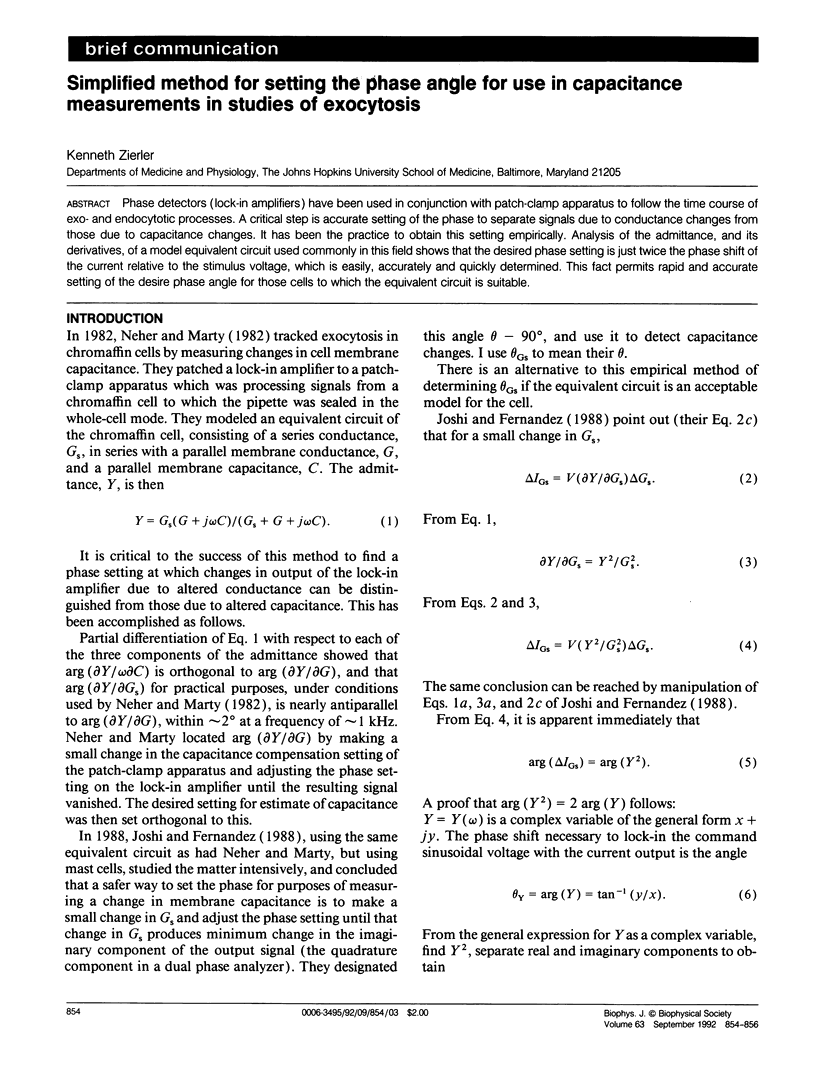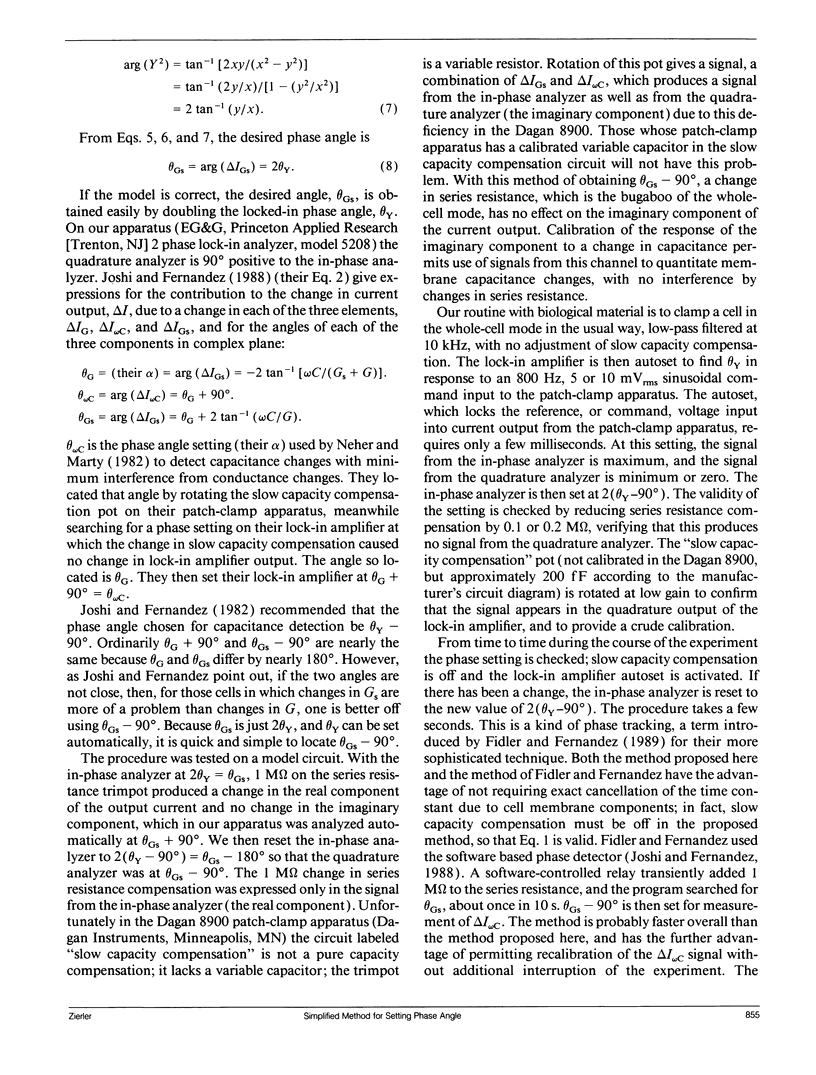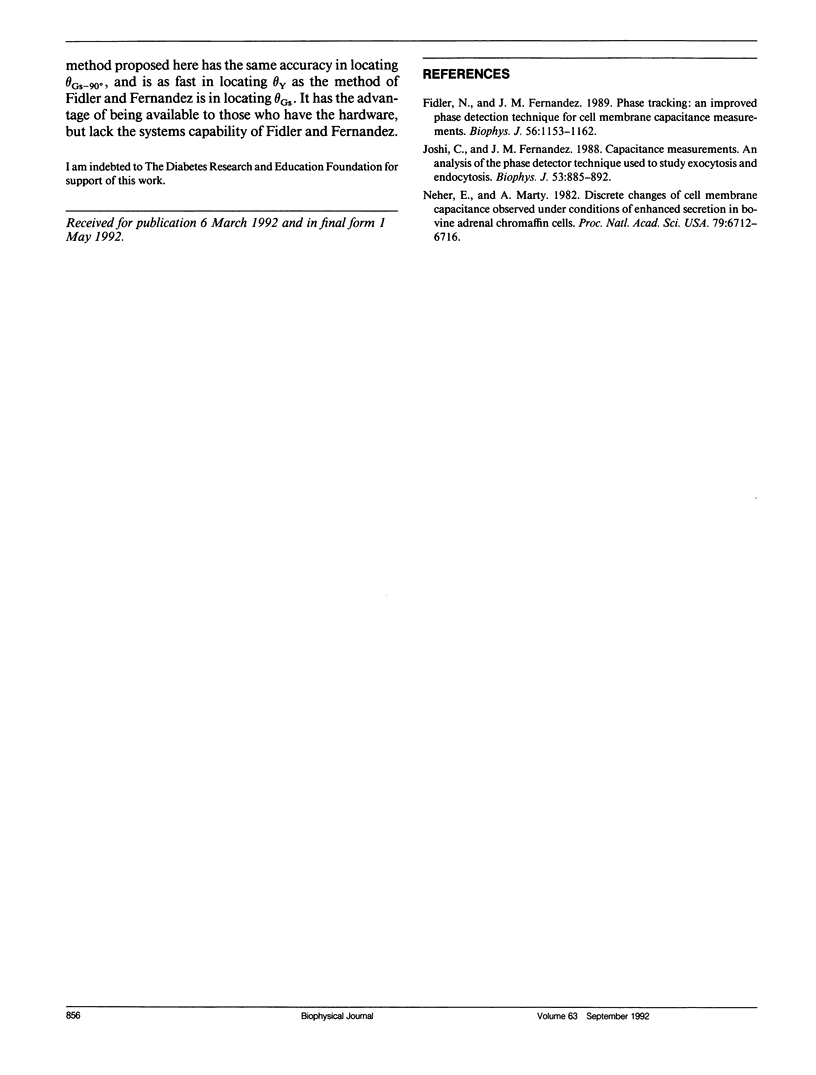Abstract
Phase detectors (lock-in amplifiers) have been used in conjunction with patch-clamp apparatus to follow the time course of exo- and endocytotic processes. A critical step is accurate setting of the phase to separate signals due to conductance changes from those due to capacitance changes. It has been the practice to obtain this setting empirically. Analysis of the admittance, and its derivatives, of a model equivalent circuit used commonly in this field shows that the desired phase setting is just twice the phase shift of the current relative to the stimulus voltage, which is easily, accurately and quickly determined. This fact permits rapid and accurate setting of the desire phase angle for those cells to which the equivalent circuit is suitable.
Full text
PDF


Selected References
These references are in PubMed. This may not be the complete list of references from this article.
- Fidler N., Fernandez J. M. Phase tracking: an improved phase detection technique for cell membrane capacitance measurements. Biophys J. 1989 Dec;56(6):1153–1162. doi: 10.1016/S0006-3495(89)82762-6. [DOI] [PMC free article] [PubMed] [Google Scholar]
- Joshi C., Fernandez J. M. Capacitance measurements. An analysis of the phase detector technique used to study exocytosis and endocytosis. Biophys J. 1988 Jun;53(6):885–892. doi: 10.1016/S0006-3495(88)83169-2. [DOI] [PMC free article] [PubMed] [Google Scholar]
- Neher E., Marty A. Discrete changes of cell membrane capacitance observed under conditions of enhanced secretion in bovine adrenal chromaffin cells. Proc Natl Acad Sci U S A. 1982 Nov;79(21):6712–6716. doi: 10.1073/pnas.79.21.6712. [DOI] [PMC free article] [PubMed] [Google Scholar]


